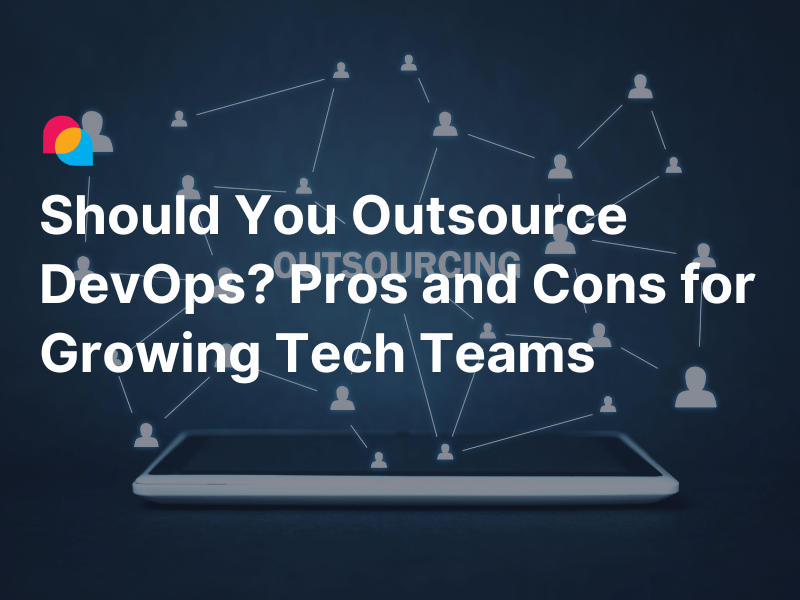Last month, we recently came across a report conducted by Sourceseek in 2017, which showed a comprehensive survey of global offshore software services. One of the critical findings exposes several top common challenges when a business enters offshore outsourcing practices. The six biggest challenges ranked by respondents include:
- The client has unclear goals.
- Unrealistic expectations.
- Not enough attention from clients.
- The client doesn't participate in the methodology.
- Timezone and distance.
- Poor communication.

Source: The 6 Most Common Software Outsourcing Challenges
These above findings inspire us to sit back and take an in-depth look at the significant pitfalls of offshore software services and address solutions for avoiding the same mistakes people make. Based on our +10-year-experience in delivering software development to global clients, we hope our point of view supports you in confidently embarking on the offshore software outsourcing journey to take their enormous values and advantages.
Inadequate project planning
The first pitfall people often encounter when outsourcing their software development to offshore countries is the lack of appropriate project planning.
Planning before you start every serious project is obvious. However, we also know that building software is a complicated process, that you could hardly know everything from the beginning. If technology is not your expertise, it is even easier to fall into vague business requirements and technical requirements. In these circumstances, without an experienced offshore software vendor backed, you might go straight to project hassles and failures.
According to the Sourceseek survey, most project failures came from the fact that clients who had unclear goals accounted for 32 percent of the study.

Source: The 6 Most Common Software Outsourcing Challenges
There are several hazards we could name when it comes to unclear goals and inadequate planning:
First, shallow project planning may result in scope creep and misalignment of the product vision.
Second, the developer team may have to guess the client's expectations, which is hazardous and might cause a severe rework later. Sometimes, developers have to hold up their work to ask for clarification. It could be a good thing, but too much clarification is a sign of ineffective communication and time management. The project rapidly loses momentum and becomes full of bottlenecks.
Finally, this pitfall could trigger project delays and surprisingly over budget, resulting in the project's overall failure.
Solutions:
Every comprehensive offshore outsourcing planning should start with your internal demands and technical talent gaps. Investigate the following factors carefully below to understand yourself inside out:
- What do you want to build in either short-term or long-term angles?
- What skill sets are you owning, and what other skill sets are you looking for to close the gap?
- Which countries and rates fit your timezone, budgets, and cultures?
Next, move to several project management factors such as:
- What are the best software technology solutions and software development methodologies?
- What are the expected project timeline and milestones?
- How do you assign the project stakeholders' roles and responsibilities?
- What are the regular communication channels, methods, and tools?
- How to define the definition of done at each step of the project?
- How to handle bugs, feature requests, and updates?
Based on these insights, you could develop a proper initial project plan to start your offshore outsourcing journey.
Read also: The ultimate guide to offshore software development outsourcing lifecycle.
A well-structured plan in the form of a Request for Proposal (RFP) can be an excellent starting point that helps the development team have clear insights into your relevant business goals, the technical requirements, and the exact project requirements. On the other hand, Software Requirement Specification (SRS) is also a useful document that helps you find the same voice with your software development team.
Read also: How to Write a Software Requirement Specification (SRS)
Unrealistic timeline
Another significant pitfall that project management often suffers is an unrealistic timeline, which means the development team is forced to complete the tasks as soon as possible. When businesses put more pressure on development teams to deliver the products faster, it might cause several adverse effects.
First, the team may not test features/tasks carefully to keep the schedule on track. Some businesses even sacrifice the test phases to keep overall spending at a minimum. Eventually, the application may have a lot of hidden bugs in production.
Second, developers may meet the deadline by accumulating technical debts. The bad code is implemented without carefully considering the whole application's context. One day, the technical debts grow enough to make refactoring a hugely time-consuming task. It's definitely a dilemma for both developers and clients to balance quality, time, and cost.
Third, in the human resource management field, the pressure from burning deadlines and not meeting deadlines will erode the developers' motivations in the long term. They can be stressed and then get a reduction in their productivity. That, in turn, causes them to fail the project deadline again.
Solutions:
Here, we promote Agile methodology to facilitate the closest collaboration and the most instant feedback:
- Carefully break down the project requirements in WBS. Outline the deliverables based on the list of features/user stories.
- Leverage test scripts to clarify the requirements further.
- Adopt continuous integration to eliminate the emerging integration issues shortly.
- Use short iterations and regular builds to facilitate direct and instant feedback.
Lack of ownership
Lack of ownership is another pitfall causing outsourcing project failures.
From the development side, sometimes, you may encounter a development team where the developers are separated for different projects or their good developers quit right after the start of the project. Back-and-forth resources, lack of focus, and incomplete ownership can lead to delivery quality inconsistency.
From the client side, one common bottleneck that happens all the time is the lack of outsourcing readiness from your in-house team. Offshore and in-house teams don't value the contributions of each other. They don't collaborate closely and blame each other instead of focusing on problem-solving.
Solutions:
First, choose Agile methodology rather than traditional methods like Waterfall. From the client side, Agile allows the involvement of the Product Owner from the sprint planning phases. It helps clients understand exactly what to expect and when to expect. They can regularly check their development team's performance with daily standup meetings or weekly meetings. From the development side, Agile team members are involved in planning and estimation, which triggers their sense of ownership and adheres to the project timeline.
Second, align a dedicated product owner from the client side with a dedicated project manager from the development side to take the responsibility of clarifying the project requirements, breaking down the backlogs, documenting necessary specifications, connecting the team, and delivering the project timely. Offshore software outsourcing often comes along with a gap in geography, timezone, and language. These two people could be in charge of handling meetings that don't fit with their working time. This point is critical for keeping the communication flow smoothly, effectively, and timely without sacrificing the project deadline.
Overrate the contract's protection
The next pitfall we want to take into consideration is the protection level of contracting.
Contracts are the main anchor helping us manage any project commitments, from software deliverables, quality, and timeline to other legal concerns like intellectual property and confidentiality. Obviously, drafting a tight contract is a must before partnering with any software development team. However, when your development team is a bad one, unfortunately, the legal fee could be double or even triple number compared to the development cost written on the contract. It's also time-consuming to settle the lawsuit, and the travel is costly. In the end, it is a severe monetary loss.
Solutions:
The best thing we can do here is carefully and seriously examine the vendors you work with. Make sure they are technically qualified, English fluent, and behave in a trusted manner. For us, it's the optimal solution for you to escape from the hassle of lengthy and costly litigation.
Second, take advantage of the very first Agile sprints to test out the quality of your development team. If any trouble happens, you could stop at the right time without losing too much time and money.
Poor communication and cultural misunderstandings
Poor communication and cultural misunderstanding issues can kill projects from the very beginning. They exist as offshore outsourcing software's inherent factors. But sometimes, we underestimate the complication of achieving the minimum development cost.
Firstly, poor English skills could make regular communication time-consuming and annoying.
Secondly, cultural discrepancy could lead to misunderstandings and project disasters. So far, we have all heard a viral story about the difference between Asian and Western cultures. It advised Western clients to be aware of passive agreement from Asian developers is a sign of essential issues not getting discussed.
Thirdly, limited workday overlap can also accelerate breakdowns in communication when goals are not appropriately set. All in all, they cause hardship in keeping businesses and development teams on the same page, resulting in frustrations and lower productivity for both parties.
Solutions:
Good preparation could start from the phase of selecting and screening vendors.
First, English fluency is a must that your software development team should have. It could span from the CEO to the delivery manager, project manager, to developers. It should come in written and verbal forms.
Second, your software development team used to work with different Western clients, especially in the country where you are located.
Third, the software team with Agile/Scrum practices can enhance the frequent interaction between clients and developers, eliminating too-late issues missed.
Fourth, it is highly recommended to establish a regular communication channel and project management platform with the development team throughout the project's lifecycle. Virtual meeting platforms, to name a few, Zoom, Skype, Slack, and Microsoft Teams can facilitate daily standup meetings, weekly conference calls, and email exchanges. Besides, some software project management tools like Jira are critical to ensuring the right things are completed on milestones and managing weekly reports from developers.
Next, it's essential to align your internal team with the remote vendor to enable the highest level of collaboration and check the outcome as per usual.
Lastly, you can actively research cultural diversity by searching on the Internet and asking your networks to outsource to your chosen countries.
By combining a well-structured process with some advanced communication tools, organizations can establish an effective management methodology to eliminate potential offshore software development risks.
Final thoughts,
Above are our views that guide you through several common pitfalls. Without significant consideration, they could quickly turn to severe obstacles and failures and freak out any business leaders to stay away from offshore software outsourcing. Thus, the first and foremost thing you should do is carefully plan and choose software vendors. Based on that, you will achieve a wide range of the most critical business objectives, like growth, revenue, profitability, and productivity.
References
- Rahul Varshneya, Five Pitfalls To Avoid When Outsourcing Software Development, www.StackOverflow.blog, 2019.
- Dave Hecker, Legal Concerns and the Offshore Software Contract, www.sourceseek.com, 2015.
- Dave Mayer, The 6 Most Common Software Outsourcing Challenges, www.sourceseek.com, 2018.





